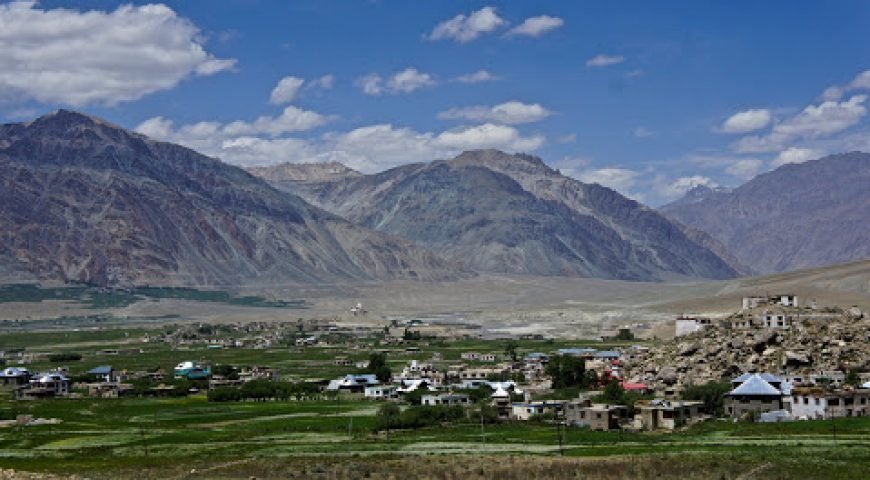
Best places to visit in Zanskar Valley
Located in the Kargil region, the Zanskar Valley is a relatively offbeat and undeveloped destination. In the 10th century, the Guge Kingdom of Tibet had control over the Zanskar Valley along with Ladakh along with large amounts of land in Zanskar Valley, Upper Kinnaur region, and the beautiful Spiti Valley.
About Zanskar Valley
Situated 250 km from Kargil town, the Zanskar town is close to the Zanskar Range, a mountain range in Ladakh UT. The height of this mountain range is 19,700 feet and the highest point is at 25,446 feet!
In regional texts, the Zanskar valley has been called by many names and some of these include Zangskar and Zaskar. Its nomenclature comes from the Tibetan word Zangs which means copper. The Zanskar Valley was said to be rich in copper at that time leading to the name Zanskar!
Zanskar valley is a high-altitude cold desert destination similar to the Leh region and Spiti Valley. It falls under a rain shadow region due to the surrounding Zanskar mountains that act as a barrier to the rain-bearing clouds.
Zanskar valley was relatively unexplored till about the early 90s when people starting traveling to the secluded region. Nowadays, trekking enthusiasts make a beeline to do the Chadar trek and the popularity of this trek is taking a toll on the valley. Tons of garbage left behind by the tourists are starting to block streams and cause damage to the surrounding environment.
Best places to visit in Zanskar Valley
Kursha Gompa
The Kursha monastery is located in the Upper Padum valley next to the Doda river. It is the largest and the most important monastery in the Zanskar Valley and is home to over 100 monks. Numerous shrines make up the monastery and are decorated with exquisite paintings done by Lama Dzappa Dorje. To make the most of your experience here, try visiting during the Gustor Festival held during the 6th month of the Tibetan calendar. The highlight of the festival is the marked dance that takes place there.
Dzongkul Monastery
A popular meditation place, the Zongkhul gompa is located in the Stod valley of Zanskar and belongs to the Drukpa school of Buddhism. It is said that its foundation was laid in the early 10th century and contains a collection of rich artifacts, sacred texts, and a beautiful crystal stupa. A major attraction of the gompa is the Zongkhul festival held during the 4th month of the Tibetan calendar. Like the Kursha Gompa, the highlight of the festival is a masked dance event.
Lingshed Monastery
The Lingshed monastery is one of the oldest monasteries in Ladakh and is surrounded by mountains on all sides. This is a Gelugpa monastery located near the Lingshet village and was founded in the 15th century. The village has been home to the locals for over a thousand years and was a hunting village in ancient times.
Suru Valley
Located in the Kargil district, the scenic Suru valley is a highly fertile region fed by the Suru river and views of the Nun-Kun peaks. The region is best experienced through a series of short hikes along the foothill of the mountains. Several picnic spots in Parkachik, Damsna, Thulus & Stakpa are an excellent opportunity to enjoy the beauty of the Ladakhi outdoors. If you are looking for places to explore, then you can visit Sankoo village, Kartse Khar, Panikhar, and Rangum.
Shingo La
The Shingo La is a high-altitude mountain pass located at an altitude of 16,700 feet. The road that leads to the pass is known as Shingo La, Shinkun La, or Shingu La and is a difficult stretch to travel on. Built in 2015, the road to the pass is very steep and it is recommended that you cover this in a 4*4 vehicle. Avalanches, heavy snowfall, and landslides can occur at any time so you have to be extremely careful while traveling through Shingo la.
Sani Monastery
The Sani Monastery is located next to the Sani village in Stod Valley. It is thought to be the oldest religious site in the entire Zanskar valley and Ladakh region. From Padum, it’s just 6 km and is a two-hour walk away. The gompa was built to resemble a castle and is basically a walled complex. The highlight of this complex is the central prayer hall that contains a vibrant collection of Buddhist statues.
Shafat Glacier
The 14-km long glacier is located just 85 km from Kargil and gives rise to the twin Nun-Kun peaks. It is used as a base to climb Nun-Kun and during summers it provides water to the Suru River.
Best time to visit Zanskar Valley
Zanskar valley is best enjoyed when it is lush green and experiences bright sunshine. Ideally, the best time to visit Zanskar valley is from the months of May till October. These months come under the Summer and Monsoon seasons but since Zanskar is under a rain shadow area, it received very little rainfall. The weather is mostly cool during these months. However, do carry some woolens as it can get cold at night.
During the winter months, Zanskar is cut off from the world due to excessive snowfall blocking all roads. It is not advisable to travel to Zanskar during this time unless you plan to do the Chadar Trek.

